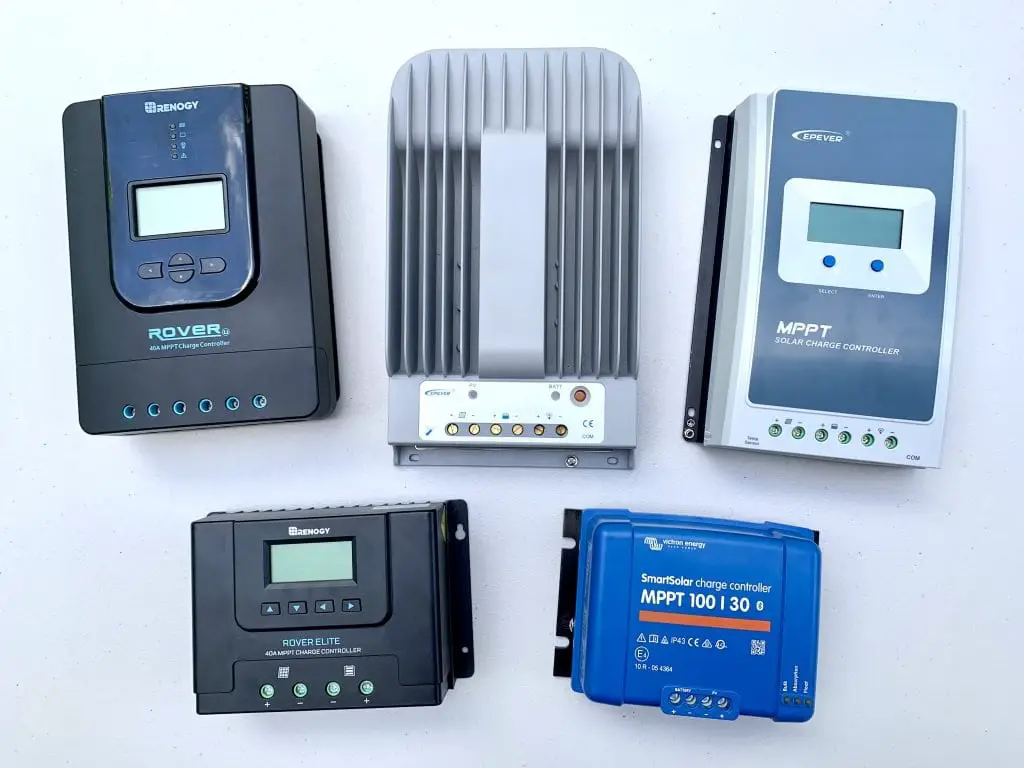Exploring the world of solar energy systems? One essential component you’ll need to understand is the solar charge controller.
This device manages the power flow from your solar panels to your batteries, ensuring optimal performance and longevity.
While there are several types of solar charge controllers, the three most common are Maximum Power Point Tracking (MPPT), Pulse Width Modulation (PWM), and Simple 1 or 2 Stage Controllers.
Each comes with its own set of advantages and disadvantages, making it crucial to choose the right one for your specific needs.
Dive in to learn more about these controllers and make an informed decision for your solar setup.
Three Main Types of Solar Charge Controllers
MPPT Solar Charge Controllers
MPPT controllers use cutting-edge technology to let your solar array operate at its maximum power point.
This ensures optimal current and voltage, converting any extra energy into more power for your batteries.
This contrasts with older PWM controllers, which let some of this extra energy go to waste.
Over the years, MPPT technology has become more affordable, making it the go-to option for many residential solar systems. In fact, you can boost your solar system’s efficiency by up to 30% using an MPPT controller.
These controllers achieve this by transforming extra voltage into added current, funneling more energy into your batteries.
Even though MPPT controllers are pricier upfront, they save you money in the long run by maximizing the energy you get from your solar panels.
They’re especially useful when your battery levels are low; the MPPT controller will convert extra voltage into more current to recharge the battery more quickly.
If setting up a solar system from scratch seems daunting, there are all-in-one packages that can help.
All you have to do is buy the solar panels that fit your needs, and you’re ready to go.
PWM Solar Charge Controller
PWM, or Pulse Width Modulation controllers, are an older and less costly option for solar systems.
They’re not as efficient as MPPT controllers, so it takes longer to fully charge a battery if you’re using a PWM controller.
Like MPPT controllers, PWM ones also manage the flow of energy to your battery bank, but they do it in a unique way.
They reduce the electrical current gradually while charging, and when the battery is full, they keep sending a tiny amount of power to keep the battery full.
For a PWM controller to work, your solar panels and batteries have to run at the same voltage level.
This makes them a poor fit for big home solar systems.
With a PWM controller, you’re restricted to using the power that matches your battery voltage, usually about 12V.
Any extra power generated by your solar panels is lost. This is in contrast to MPPT controllers, which can change extra voltage into more current.
PWM controllers are a better fit for hot areas, where the benefits of an MPPT controller aren’t as noticeable.
They’re also a cost-effective choice for small setups where an MPPT controller might not be worth the investment.
Simple 1 or 2 Stage Controllers
These are the most basic types and are often used in very small systems like solar yardlights.
They basically connect or disconnect the solar panel to control voltage, but they offer the least amount of control and efficiency.
How to Choose Which Type of Solar Charge Controller Is Right for You?
For modern homes or large leisure solar setups, your main options are MPPT and PWM charge controllers.
An MPPT charge controller is the go-to choice for home solar projects, RVs, cabins, and other places off the grid.
Unless you’re only using a single or a pair of solar panels, like on a camping trip, the extra benefits of an MPPT controller make it worth the somewhat higher cost.
MPPT controllers use updated tech to work at the best voltage for power, which is especially useful in cold weather when the voltage from the solar panels is much higher than the battery’s.
MPPT controllers can also work with higher voltages and less current, making your setup simpler.
PWM controllers are smaller and work at the same voltage as your battery.
With PWM controllers, your solar panels have to be the same voltage as your battery. This limits your options.
Many solar panels that work great with MPPT controllers won’t work with PWM controllers because of the voltage difference.









